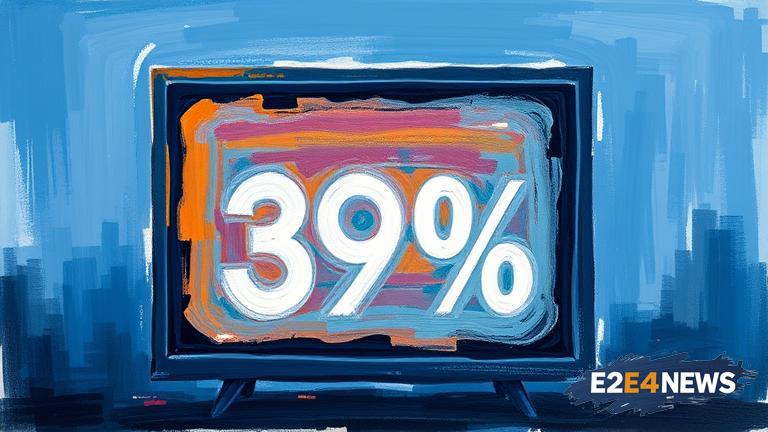The Free State Foundation, a non-profit think tank, has raised concerns about the Federal Communications Commission’s (FCC) proposal to lift the 39% TV cap, which limits the number of television stations a single entity can own. The foundation argues that lifting the cap would lead to a significant increase in media consolidation, potentially harming local communities and reducing diversity in programming. The FCC has been considering the proposal as part of its quadrennial review of media ownership rules. The 39% TV cap has been in place since 2004, and its lifting could have far-reaching implications for the media landscape. The Free State Foundation’s concerns are rooted in the potential for large media conglomerates to acquire more stations, leading to a homogenization of content and a reduction in local news and programming. This, in turn, could have negative consequences for local communities, which rely on local media outlets for information and entertainment. The foundation also argues that lifting the cap could lead to a decrease in diversity in programming, as larger media companies may prioritize national content over local programming. Furthermore, the foundation is concerned that the FCC’s proposal does not take into account the significant changes in the media landscape since the 39% TV cap was first introduced. The rise of online streaming services and social media has dramatically altered the way people consume media, and the foundation argues that the FCC’s proposal does not adequately address these changes. In addition, the foundation is critical of the FCC’s methodology in assessing the impact of lifting the 39% TV cap, arguing that it relies on outdated data and fails to consider the potential consequences for local communities. The FCC’s proposal has also been met with opposition from other groups, including the National Association of Broadcasters and the American Cable Association. These groups argue that lifting the 39% TV cap would lead to a significant increase in media consolidation, harming local communities and reducing diversity in programming. The debate over the 39% TV cap has sparked a wider discussion about the role of media ownership regulations in promoting diversity and localism in the media landscape. The FCC’s proposal has also raised questions about the impact of media consolidation on local news and programming, with some arguing that it could lead to a decline in the quality and quantity of local content. Others argue that lifting the cap could lead to increased investment in local media outlets, potentially improving the quality and diversity of local programming. The issue has also been the subject of congressional scrutiny, with some lawmakers expressing concerns about the potential consequences of lifting the 39% TV cap. The FCC is expected to make a decision on the proposal in the coming months, and the outcome is likely to have significant implications for the media landscape. The Free State Foundation’s concerns about the potential consequences of lifting the 39% TV cap have highlighted the need for a more nuanced and informed discussion about media ownership regulations. The foundation’s arguments have also underscored the importance of considering the potential impact on local communities and diversity in programming. As the FCC considers the proposal, it is likely to face significant pressure from various stakeholders, including media companies, consumer groups, and lawmakers. The outcome of the debate will have far-reaching implications for the media landscape, and the Free State Foundation’s concerns have highlighted the need for a careful and considered approach to media ownership regulations. The foundation’s detailed analysis of the proposal has provided a valuable contribution to the debate, and its concerns are likely to be taken into account by the FCC as it considers the proposal. The issue is complex and multifaceted, and the FCC will need to carefully weigh the competing interests and arguments as it makes its decision. The Free State Foundation’s concerns have also highlighted the need for greater transparency and accountability in media ownership regulations, and the importance of ensuring that the media landscape serves the needs of local communities. The debate over the 39% TV cap is likely to continue in the coming months, and the outcome will have significant implications for the media landscape. The Free State Foundation’s concerns have provided a valuable perspective on the issue, and its arguments are likely to be taken into account by the FCC as it considers the proposal.
